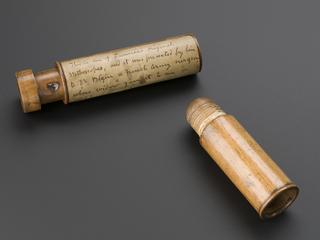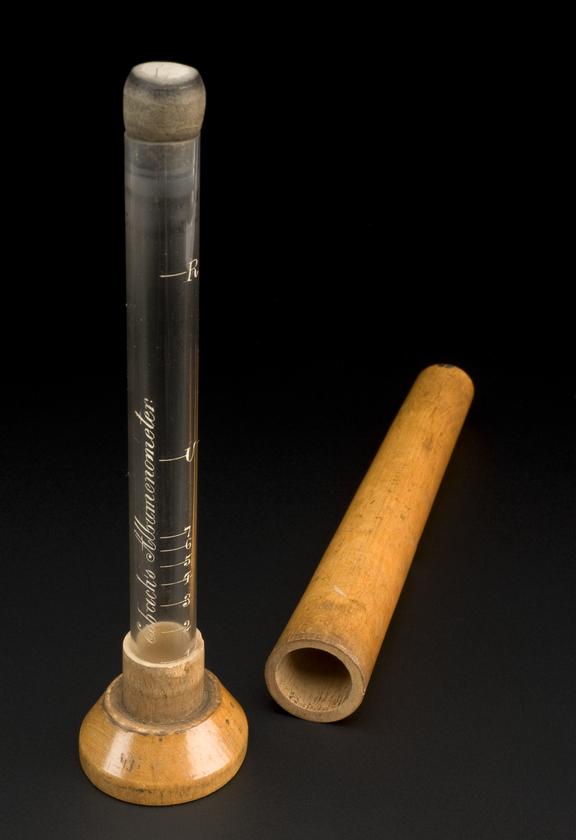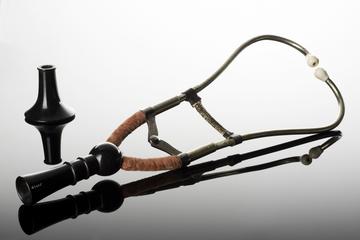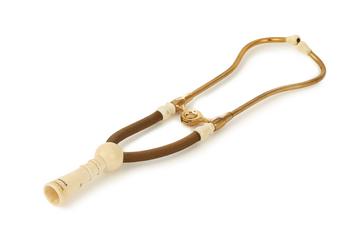
Esbach type albumenometer, Europe, 1895-1905
- Made:
- 1895-1905 in unknown place




Esbach albumenometer, in wooden cover
Esbach’s albumenometer used a simple chemical test to measure the amount of the protein albumen in urine. The instrument is made of glass and wood. It is contained in a wooden case. Urine was filled to the ‘U’ mark and a chemical reagent to the ‘R’ mark. The substance stood for 24 hours before the protein levels were assessed. Unusual levels of albumen in the urine can indicate kidney problems. It is named after its inventor, French physician, G H Esbach (1843-90)
Urine was one of the first substances to be scientifically scrutinised in the 1800s. It could be examined easily and could show obvious signs of disease.
Details
- Category:
- Clinical Diagnosis
- Collection:
- Sir Henry Wellcome's Museum Collection
- Object Number:
- A600474
- Materials:
- case, wood, case, glass and bung, wood
- Measurements:
-
overall: 235 mm x 55 mm x 55 mm, 0.0763 kg
overall (closed): 214 mm 45 mm, 0.0763 kg
- type:
- albumenometer




